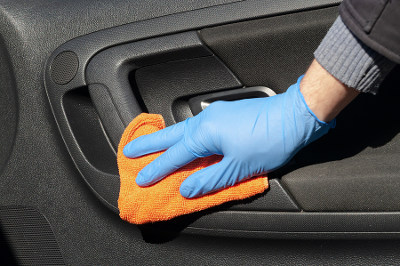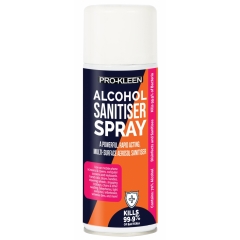
November 18th, 2020 by
‘Sanitising’ has become one of the most commonly used words in the English language. While sanitising your hands is relatively simple, there’s a bit more to it when you’re sanitising surfaces. Bacteria and viruses can thrive on both hard and soft surfaces, and your car has lots of both. Not only that, but vehicle interiors are full of nooks and crannies that most drivers don’t even think about. How often do you clean the gap under your handbrake, the corner of your door compartment or glove box, or the hinge of your sun visor?
There are several high-touch points in a car interior, plus it’s a sealed environment meaning that any bacteria and viruses expelled into the air via coughs, sneezes, and even just breathing, will circulate around the whole space very quickly.
It's not just COVID you need to think about
According to research carried out by CarRentals.com, there are around 700 different kinds of bacteria living in an average car. It found that the average steering wheel had 629 colony-forming units (CFU) of bacteria per square centimetre, cup holders have 506 CFU/cm2, the seat belt has 403 CFU/cm2, and the inside door handle has 256 CFU/cm2. For comparison, a public toilet seat has 172 CFU/cm2 and a button in a lift has 313 CFU/cm2. Not nice to think about.
Not only that but the average petrol pump has not hundreds of CFU/cm2 but millions and the first thing you do after filling up is get in your car and touch the steering wheel, gear stick, and door handle. It’s easy to see how viruses and bacteria can spread without you realising it’s happening!
How can you sanitise your car?
 Regular cleaning is the best way to keep your car sanitary and bacteria, virus and germ-free. The average person in the UK only cleans the interior of their car 5 times a year (compared to cleaning the exterior 8 times). In times of a global pandemic, the focus needs to shift to what will keep us safe rather than what looks good to other people.
Regular cleaning is the best way to keep your car sanitary and bacteria, virus and germ-free. The average person in the UK only cleans the interior of their car 5 times a year (compared to cleaning the exterior 8 times). In times of a global pandemic, the focus needs to shift to what will keep us safe rather than what looks good to other people.
It goes without saying that a tidy car is easier to clean than a messy car and one of the main sources of bacteria is food waste. Ideally, refrain from eating in the car but if you do, remove any crumbs, spills, and wrappers when you leave the car.
Cleaning hard surfaces
The hard surfaces of the car are the areas that will accumulate the most germs because they tend to be touched the most but they’re also the easiest to clean. Pay special attention to hard to reach areas such as cup holders and the inside of door handles. Your standard cleaning spray may not quite cut it with regard to killing germs and viruses so use an alcohol spray such as Pro-Kleen Alcohol Sanitiser Aerosol Spray. Don’t forget to clean the windows and windscreen as you may not touch them often but you will still breathe on them.
We cannot emphasise how important it is to change the cloth you are using regularly. Equip yourself with plenty of micro-fibre cloths, such as these ones, otherwise, you may end up spreading germs from one area to another.
Cleaning upholstery
Many overlook the fabric elements of car interiors when it comes to cleaning as it’s not as straightforward. However, seats are prime spots for spills and dirt transfer from clothes so bacteria and mould can easily develop here and will often be the culprit for any bad smells.
Use car upholstery cleaner such as Pro-Kleen Fruity Fresh Car Upholstery Cleaner which will break down dirt, odour, and bacteria (and leave it smelling very pleasant). You can still spray with the alcohol sanitising spray in between full washes to keep on top of things.
Pro-Kleen Alcohol Sanitiser Spray 2 x 400ml
Price: £14.99
Buy Now
Keep hands clean
It’s a really good idea to keep some hand sanitiser and sanitising wipes in the car for keeping your hands clean and wiping around in between valeting.
Comments
Leave a reply
Your e-mail address will not be published. All fields are required


